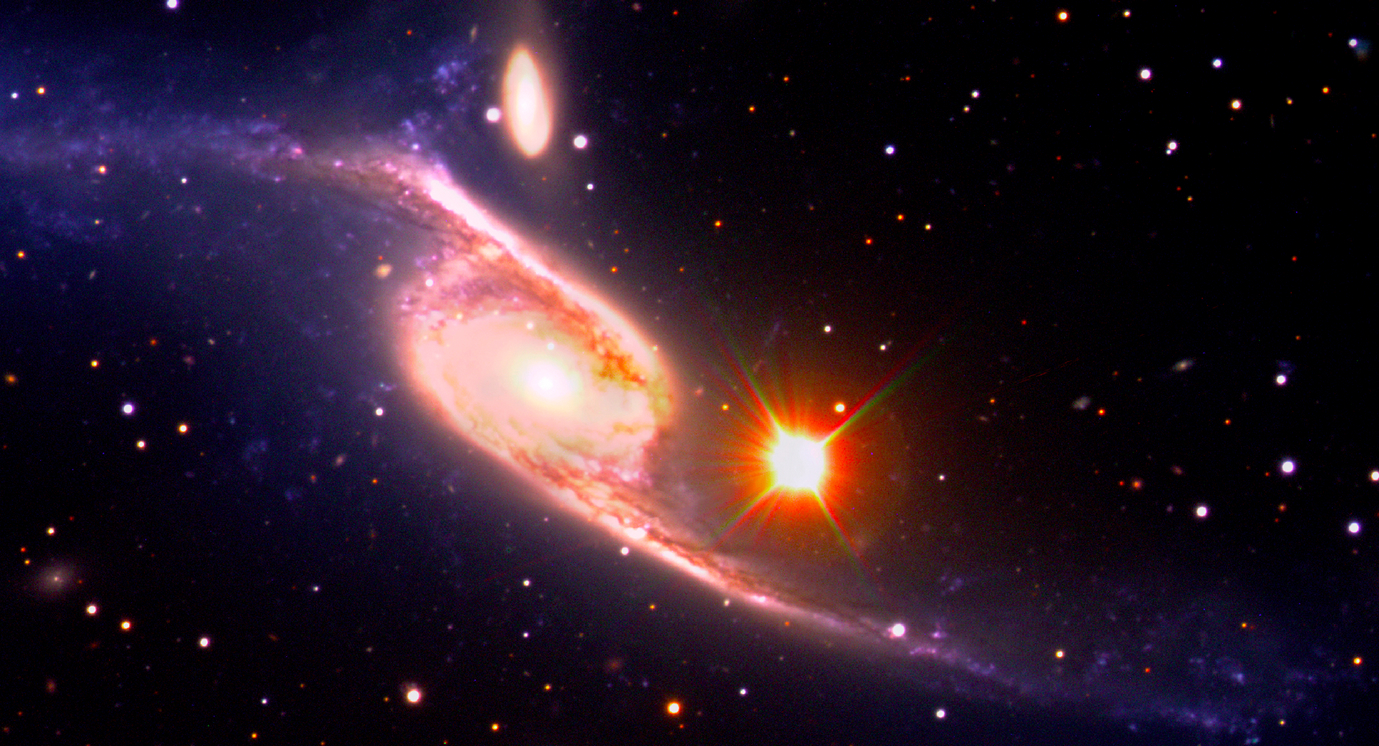Largest spiral galaxy in known universe
January 14, 2013

Spiral galaxy NGC 6872 combines visible light images from the European Southern Observatory’s Very Large Telescope with far-ultraviolet data from NASA’s GALEX and 3.6-micron infrared data acquired by NASA’s Spitzer Space Telescope (credit: NASA’s Goddard Space Flight Center/ESO/JPL-Caltech/DSS)
Astronomers have crowned the spectacular barred spiral galaxy NGC 6872 the largest-known spiral galaxy in the known universe, based on archival data from NASA’s Galaxy Evolution Explorer (GALEX) mission, on loan to the California Institute of Technology.
Measuring tip-to-tip across its two outsized spiral arms, NGC 6872 spans more than 522,000 light-years, making it more than five times the size of our Milky Way galaxy. It was formed at least a few billion years ago, astronomers calculate.
“Understanding the structure and dynamics of nearby interacting systems like this one brings us a step closer to placing these events into their proper cosmological context, paving the way to decoding what we find in younger, more distant systems,” said team member and Goddard astrophysicist Eli Dwek.

Computer simulations of the collision between NGC 6872 and IC 4970 reproduce the basic features of the galaxies as we see them today. They indicate that IC 4970’s closest encounter occurred 130 million years ago and that the smaller galaxy followed a path (dashed curve) close to the plane of the spiral’s disk and in the same direction it rotates. (Credit: NASA’s Goddard Space Flight Center, after C. Horellou (Onsala Space Observatory) and B. Koribalski (ATNF))